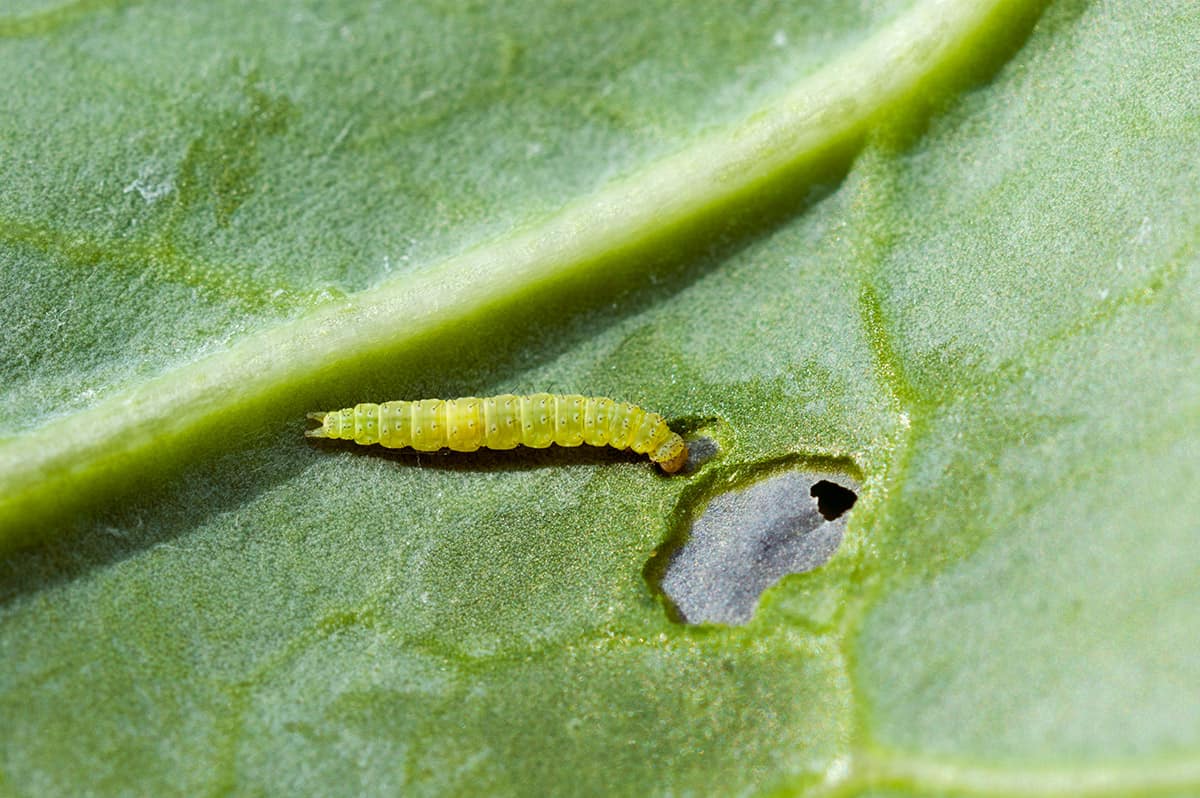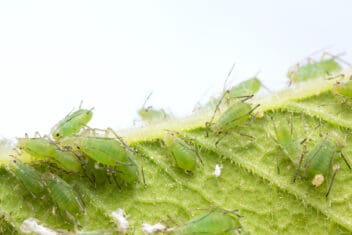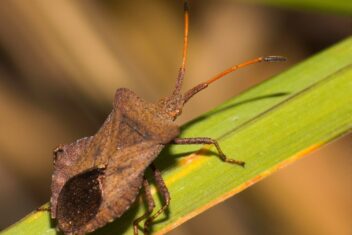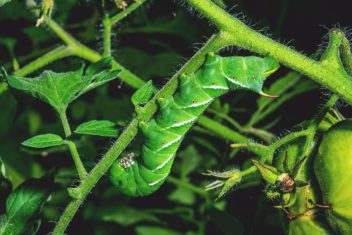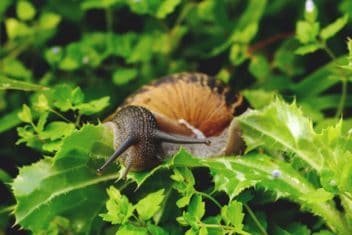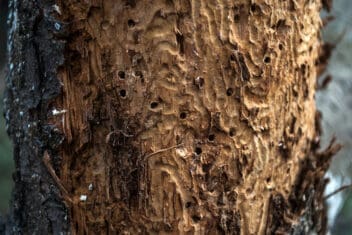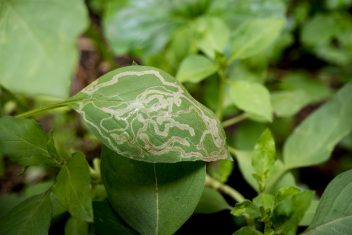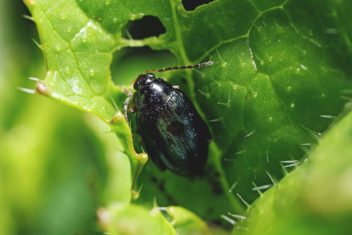Dealing with pests in the garden is something that no one wants to face, but it happens to all of us from time to time. Diamondback moths are pests that attack all plants in the cabbage family. The larvae do the most damage, eating through the leaves and potentially destroying your veggies.
If you’re growing brassicas and you have some pest damage, you might have a diamondback moth problem. Here’s what you need to know.
What is a Diamondback Moth?
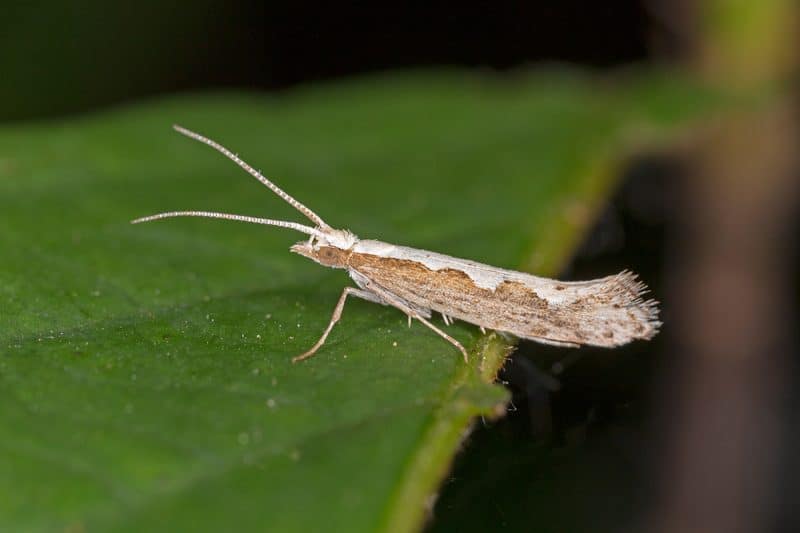
Diamondback moths (Plutella xylostella) are night-flying moths that originated in Europe but migrated into the Americas, Asia, Australia, and New Zealand in the mid-to-late 1850s. If you live somewhere that you can grow cabbages, these pests are sure to be around.
Often compared to cabbage loopers, these moths lay eggs that hatch into larvae that can really damage your crops.
Gardeners typically see the adult versions, which are small, slender, grayish-brown moths with long antennae. They don’t live too long; males live for 12 days, and females live for 16 days, on average. That’s enough time for these pests to lay eggs and start the lifecycle over again.
Diamondback moths overwinter in temperate areas, but if you live somewhere with cold winters, chances are they won’t survive. The bad news is that they re-invade these areas in the spring.
Diamondback moths primarily attack plants in the cruciferae family, such as:
- Broccoli
- Brussels sprouts
- Cabbage
- Chinese Cabbage
- Cauliflower
- Collard
- Kale
- Kohlrabi
- Mustard
- Radishes
- Turnips
- Watercress
The Lifecycle of a Diamondback Moth
Female diamondback moths lay around 250 to 300 eggs, but the average is 150 eggs, before they die. Their eggs are oval and flat, typically measuring only .44mm long. They’re yellow or pale green, and the females lay them in small groups on the depressions in the surface of the foliage. Within a week, those eggs turn into larva.
The larvae are active and small, wriggling around and moving down the plant on strands of silk. In the beginning, the larvae’s feeding habit is leaf mining, but since these pests are so small, you probably won’t notice them. Then, they molt underneath the leaf and feed on the lower surface of the leaf.
That’s when they start to chew on the foliage in earnest and do real damage.
The next step is the pupa, which happens in a loose silk cocoon on the lower or outer leaves. That takes about 9 but up to 15 days. This is the stage before they turn into the adult diamondback moth.
As mentioned before, the adults live for only three weeks, at minimum. They lay eggs and die shortly after. The total lifecycle of the diamondback moth takes 50 days, so depending on where you live, these pests develop as few as four generations or as many as 12 generations each year.
That’s problematic!
Signs of a Diamondback Moth Infestation
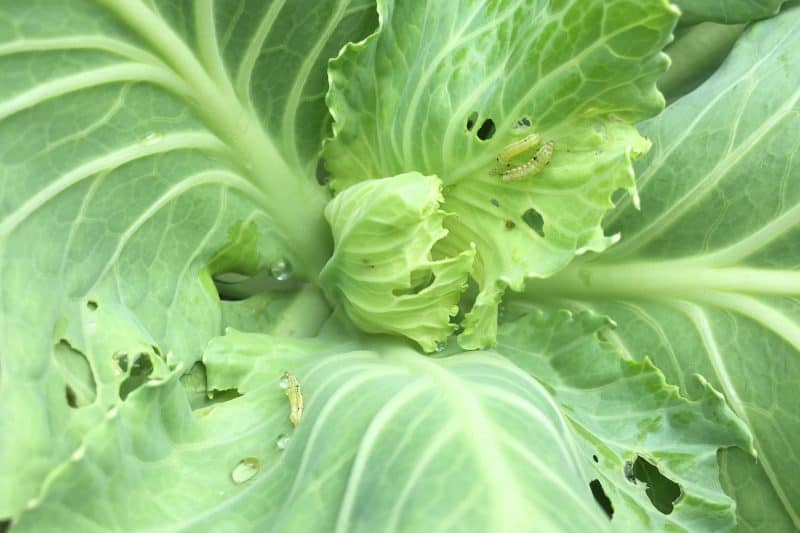
While dealing with diamondback moth larva is frustrating, these pests aren’t as destructive as others, so long as the infestation doesn’t get too large. Using proper gardening and prevention techniques will go a long way towards avoiding a serious problem.
So, how do you know if you have a diamondback moth infestation? You have to look at the plant damage caused by these pests, which happens during the larval stage when they feed on the plants.
The larvae might be small, but they’re numerous and destructive. Here are some of the common signs of a diamondback moth infestation.
- Presence of silk on the plants
- Skeletonized foliage except for the leaf veins
- Damage starts with the lower leaves first
- Damage to the under leaf surface, leaving the upper epidermic intact, creating a window-pane effect
- Problems with the head formation in cabbages, broccoli, and cauliflower
How to Prevent Diamondback Moths
Preventing pests in your garden is always easier than getting rid of them, so it’s best if you take early measures to prevent diamondback moths. Here are a few tricks to try.
Use Floating Row Covers
If the adult diamondback moths are unable to lay their eggs on your plants, then you won’t have to worry about an infestation. Putting a floating row cover over your plants stops the moths from accessing your plants.
This doesn’t help, however, if they overwintered in your soil and emerge under the row covers. It can help to turn the surface of the soil in the early spring to expose the the pests.
Plant Pest-Free Transplants
Another pest-management tip is to use seedling transplants that are free of larval or any potential contaminations. Check for certified pest-free plants when you go shopping.
Watch for Pests
Like always, gardeners should keep an eye on their crops and regularly check for the potential damage caused by pests. Monitoring for larva or feeding damage means that you can tackle any problems as early as possible.
How to Get Rid of a Diamondback Moth Infestation
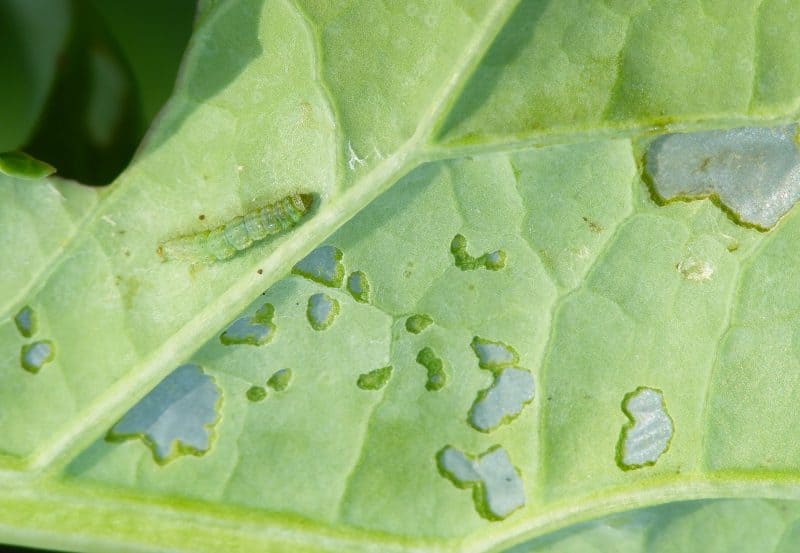
The problem with diamondback moths is that they are known for insecticide resistance; this began in the 1980s. At this point, most insecticides available in the stores are ineffective, so if you encounter these pests in your garden, you might wonder what you can do to get rid of a diamondback moth infestation.
Always Rotate Crops
Since diamondback moths have a narrow range of hosts and only feed on cruciferous plants, crop rotation is one of the key ways to take control back of your garden. These pests overwinter in the soil in many locations, so make sure you avoid replanting the same crops in the same garden area. This is an easy way to reduce the number of pests and damage to your crops.
Use Bacillus thuringiensis
If you apply Bacillus thuringiensis(Bt) early when you notice these pests on your plants, it can be an effective method to control diamondback moths. You want to make sure that you cover the plant properly and use it as directed. It often needs to be applied more than one time to control this pest population effectively.
Keep in mind that this pest has also developed a resistance to Bt, so alternate between kurstaki and aizawa strains and other pesticides. Neem oil is a good option to rotate into your control regime.
Release Natural Enemies
One thing that works to get rid of diamondback moths is releasing natural enemies in your garden. Natural enemies kill large larvae, prepupae, and pupae, so this is a safe and effective choice for gardeners.
Some natural parasitoid enemies to release in a garden include Microplitis plutellae, Diadegma insulare, and Diadromus subtilicornis.
Plant Trap Crops
You know that diamondback moths like plants in the cabbage family, so one control method is to try interplanting with trap crops. This method seems to be highly effective based on what many gardeners note. These pests enjoy white mustard and rape, both of which can be trap crops.
You can plant a row of trap crops between every other row of cabbages, or plant a trap crop at each corner of your raised beds. Once you notice that the trap crop is full of pests, you can remove and burn it, killing those pests.
Use Sex Pheromone Traps
Since these pests have been around and studied for several decades, we know the sex pheromone used by the female adults to attract the males, and gardening companies produce diamondback moth traps to plant in your garden.
